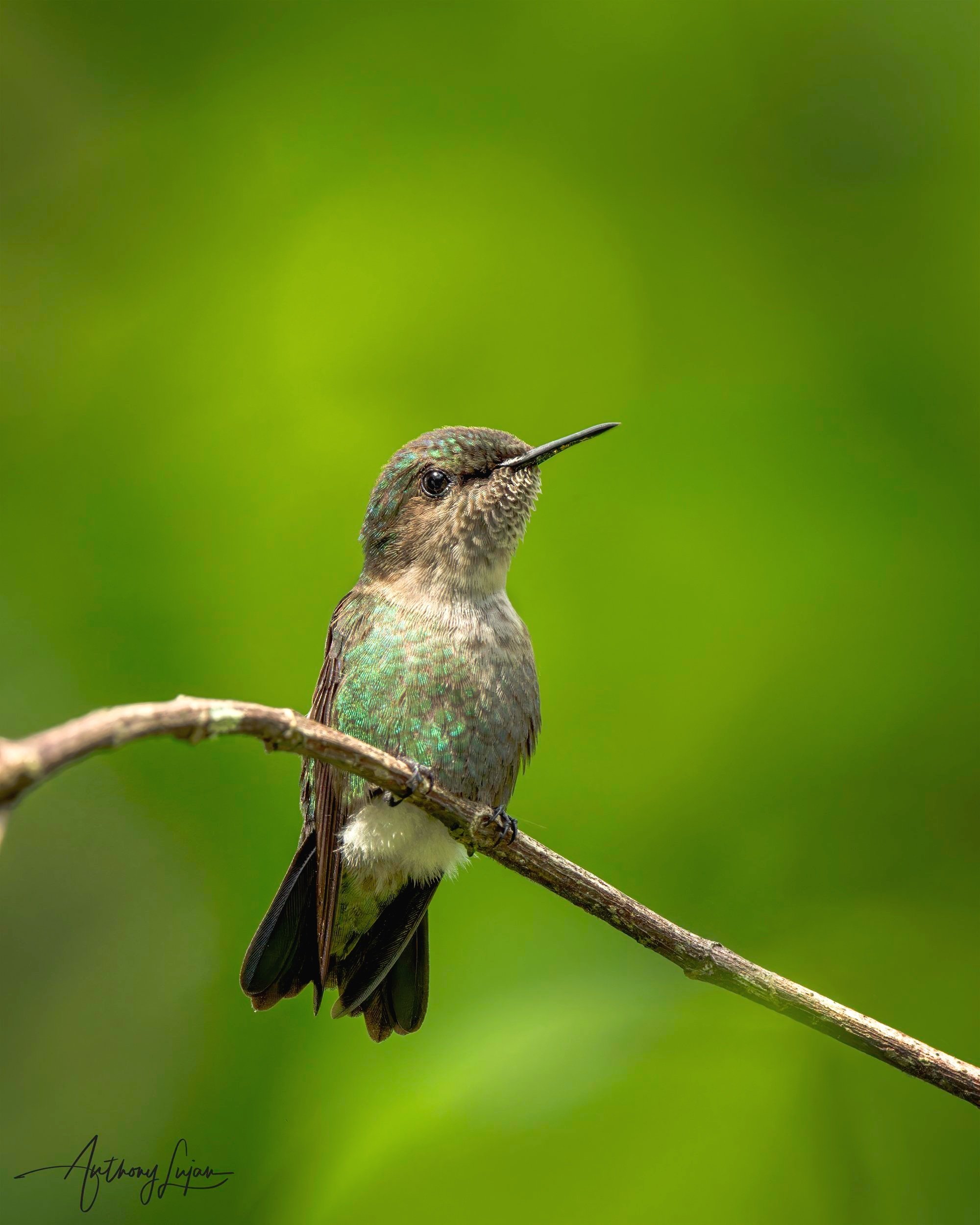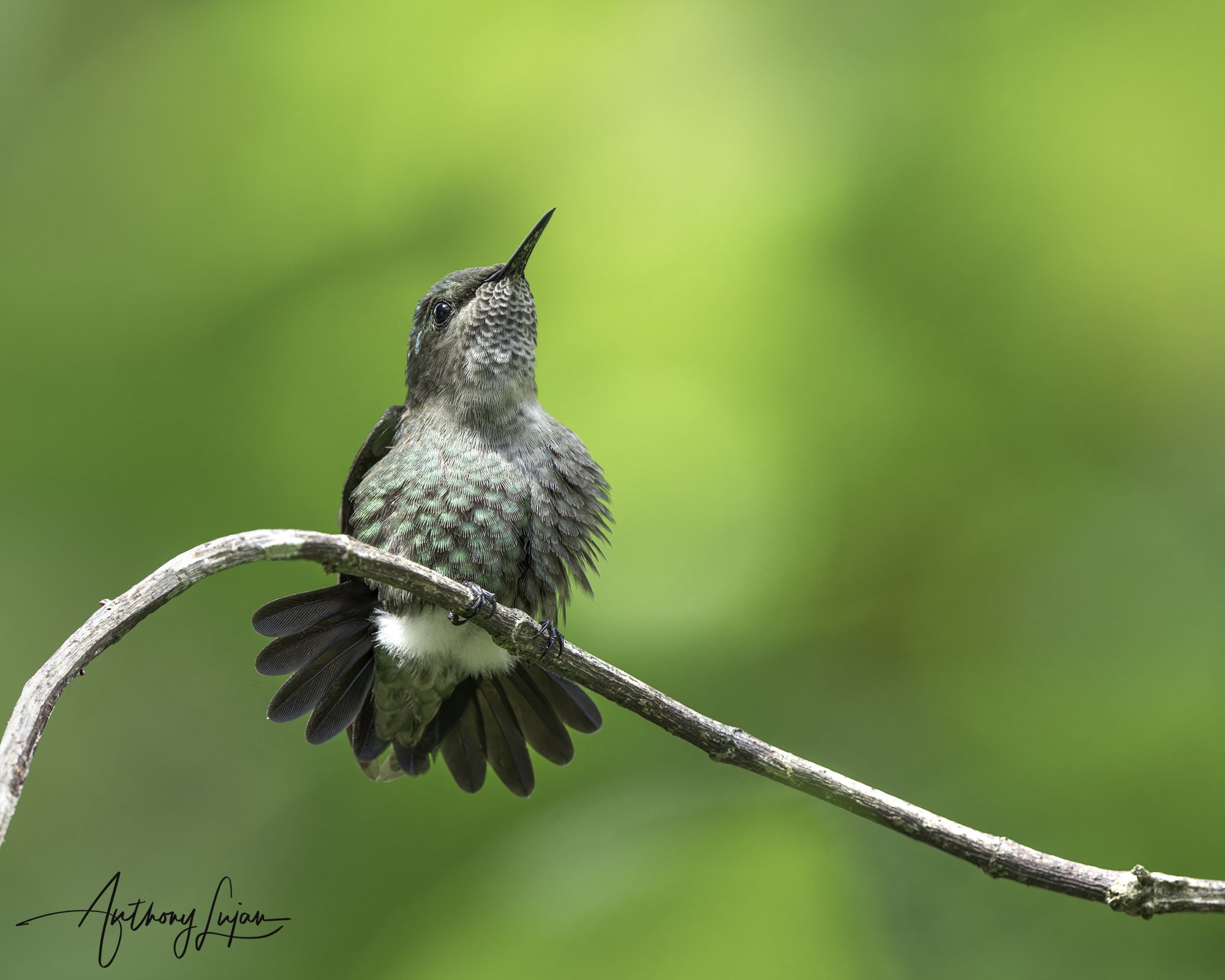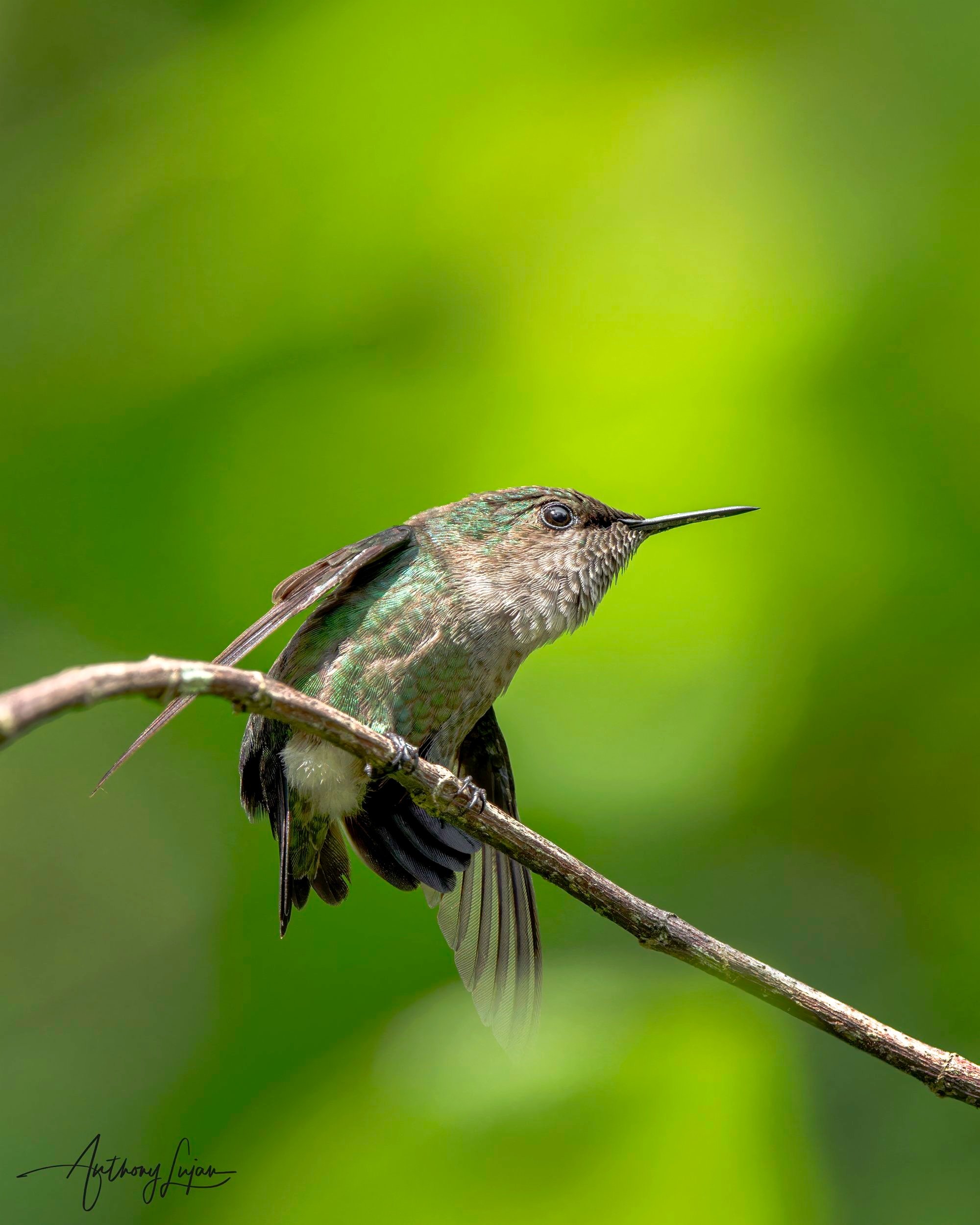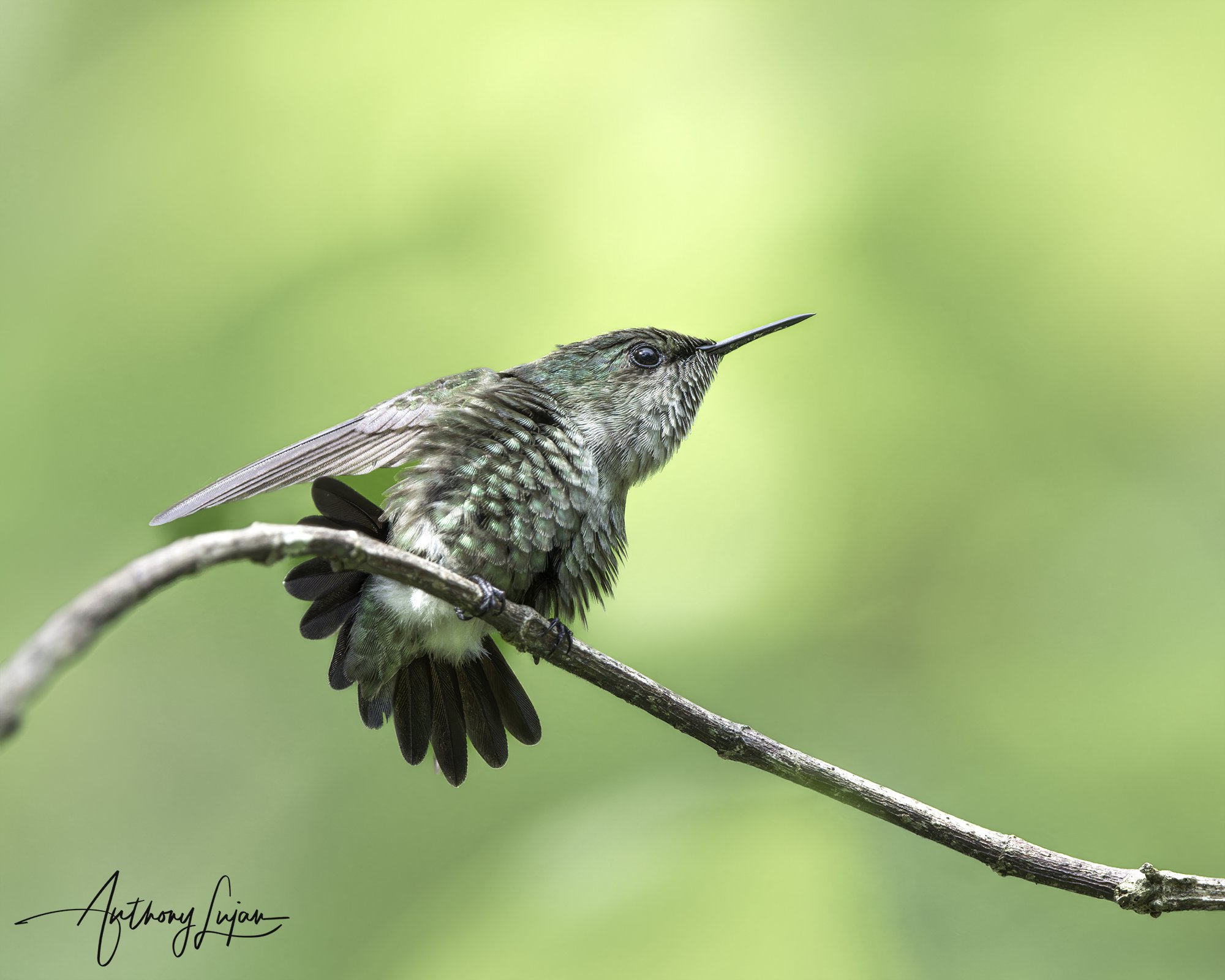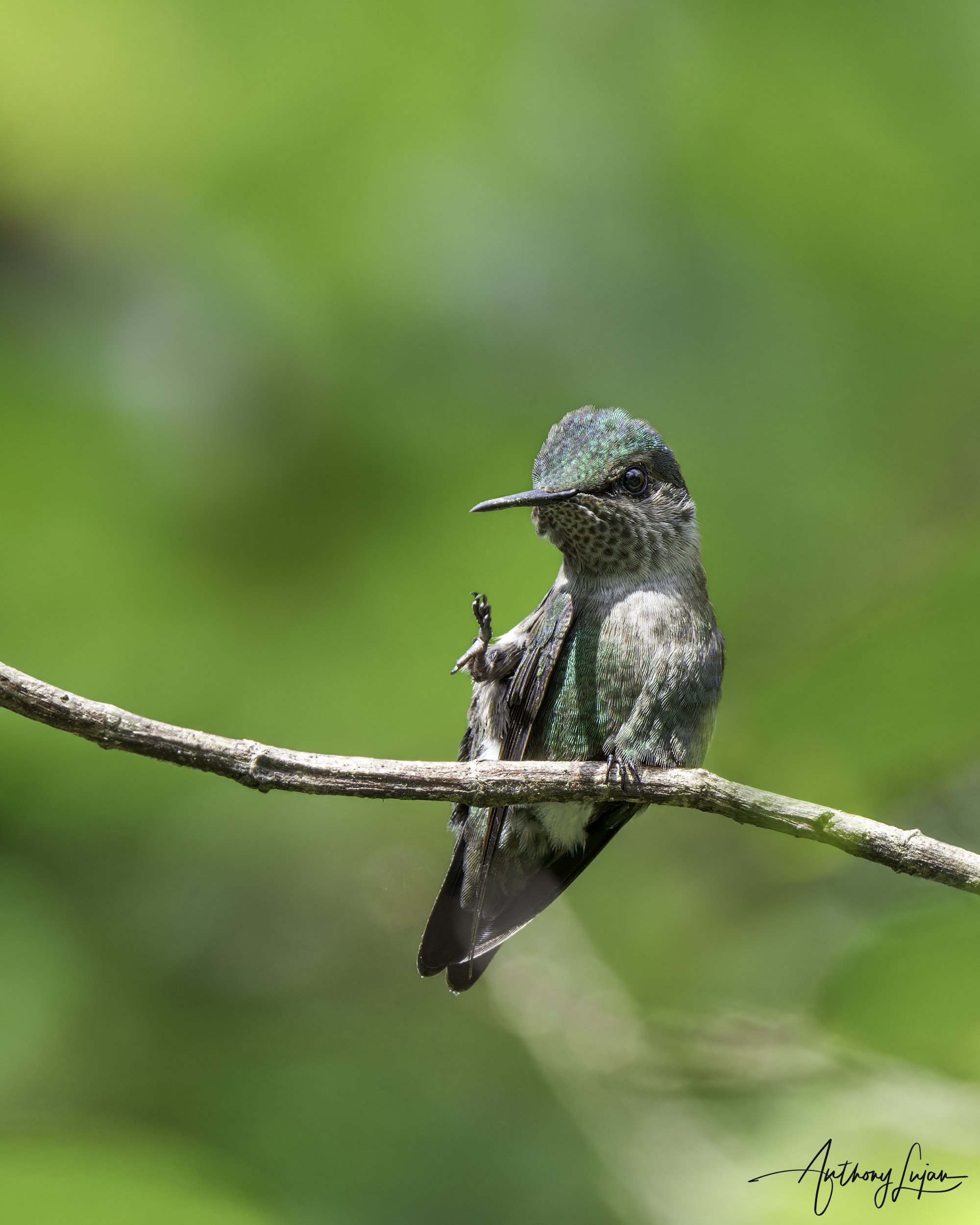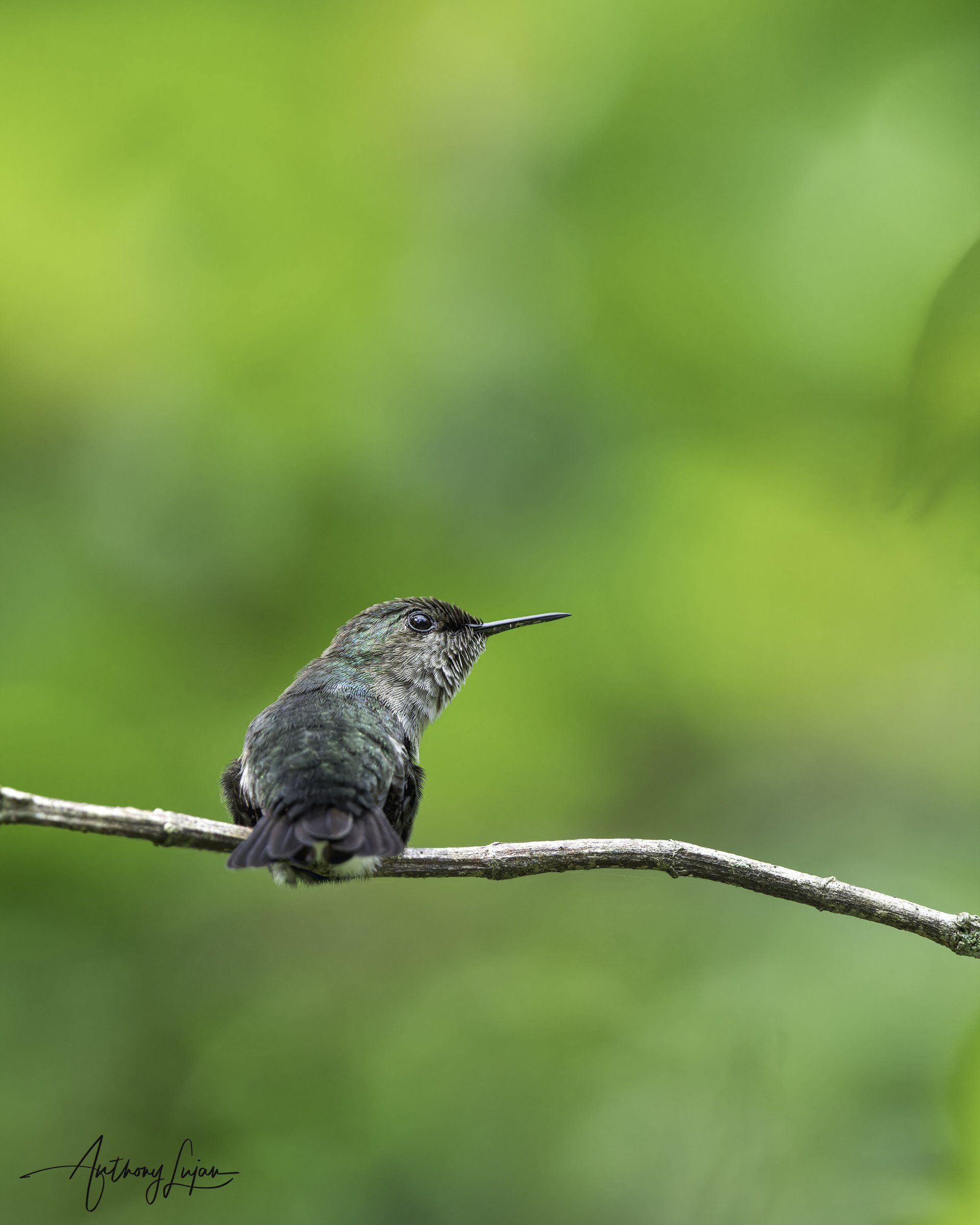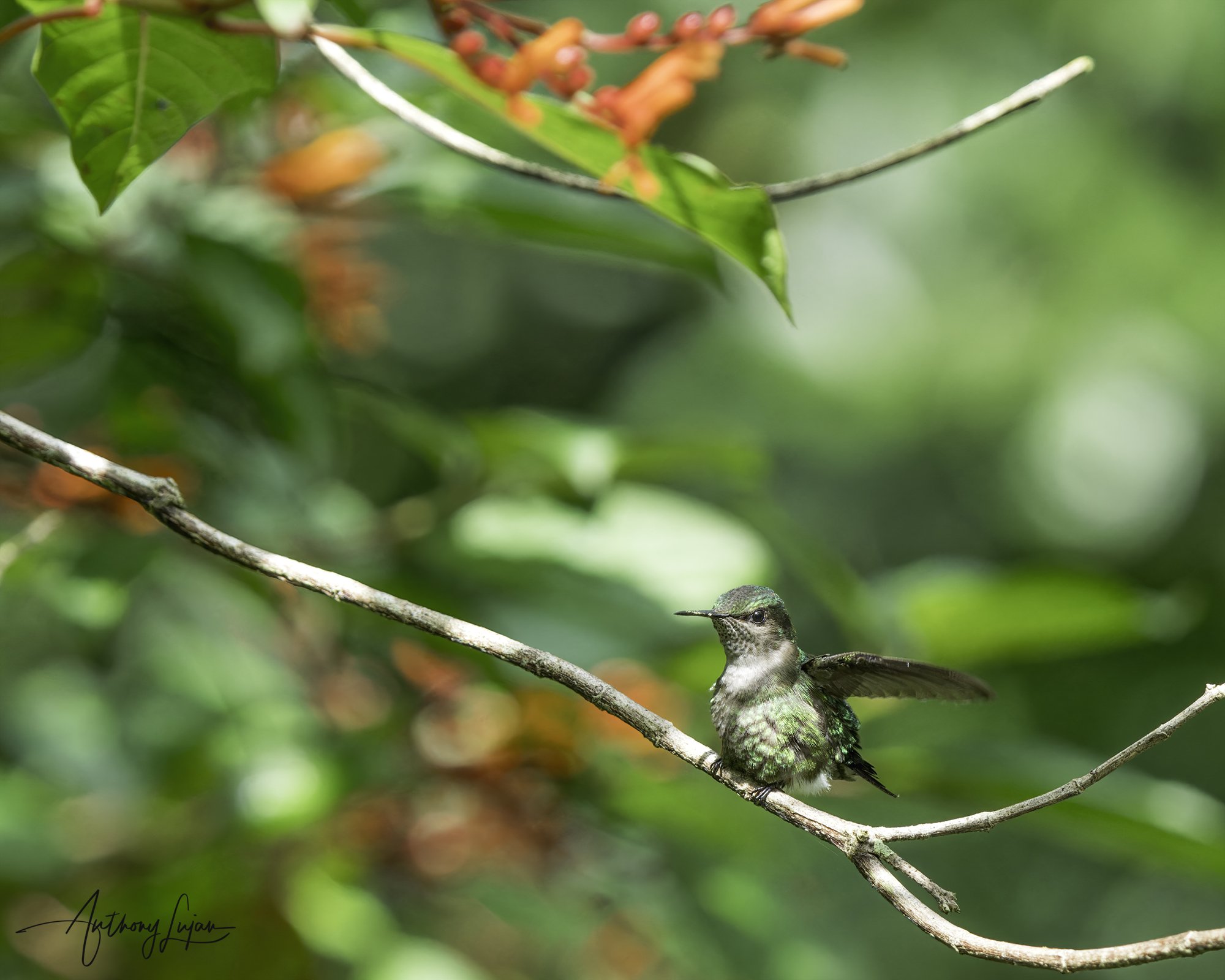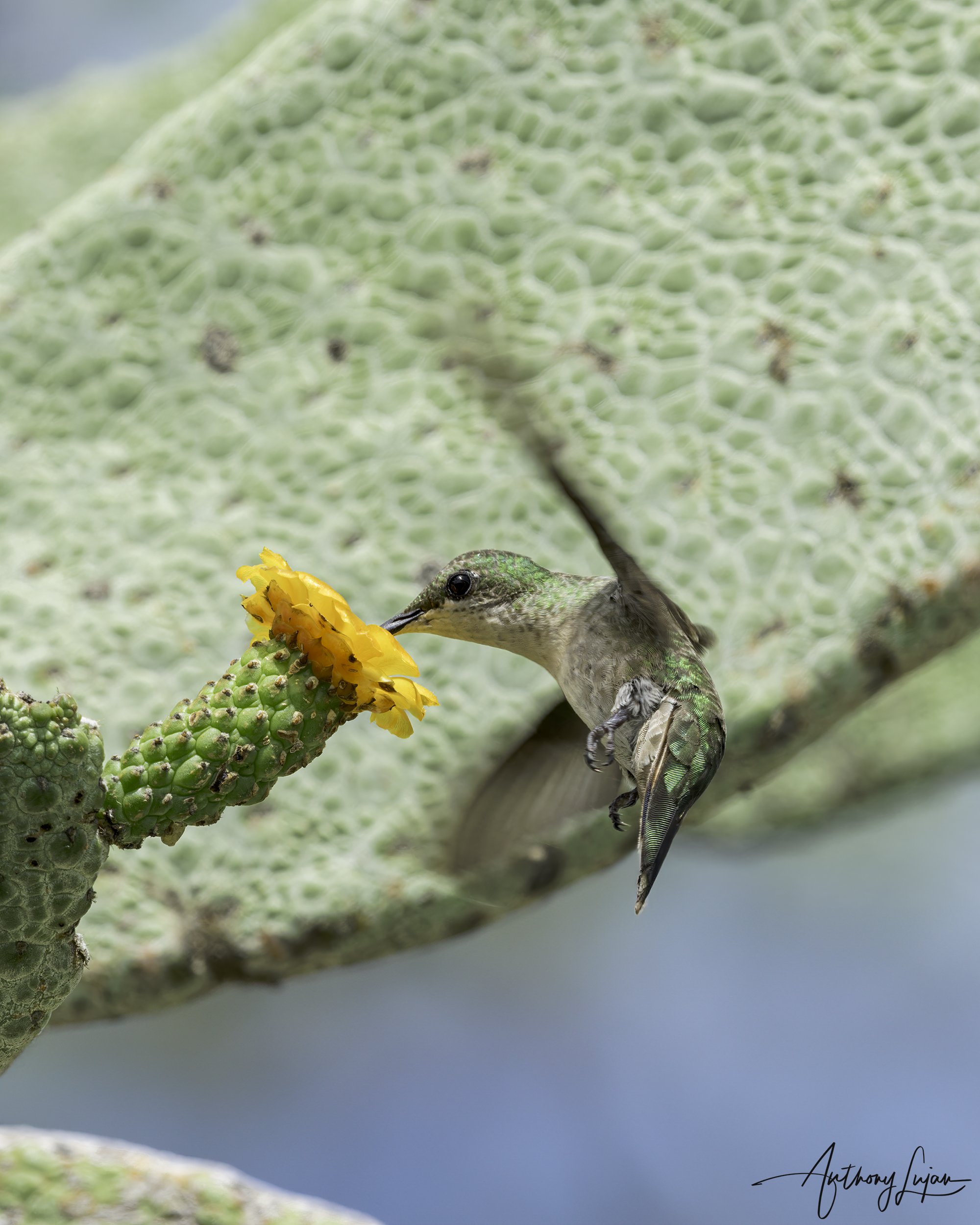Vervain
Common name: Vervain Hummingbird
Scientific name: Mellisuga minima
Clade: Mellisugini - Bees
The Vervain Hummingbird is perhaps the second-smallest bird in the world after the smallest, the Bee Hummingbird, though some other tiny ones are close to it in size. It is about 6 cm (2.4 in) long, including the 1 cm (0.39 in) bill, and weighs about 2 to 2.4 g (0.071 to 0.085 oz).
The Vervain Hummingbirds are small, even for a hummingbird, and inhabits most flower-filled habitats, with the exception of dense woodlands. Both males and females have plain coloration and relatively short bills. Both the female Hispaniolan Emerald and the female Streamertail are similarly patterned, but the former is obviously larger, has a longer tail, and has a proportionally longer bill. It is common for this species to be heard before it is seen. Squeaky, high-pitched "swees" and "swee-ips" make up its song. High squeaking notes and buzzes are occasionally heard during calls.
In at least the early 1700's (Brisson 1760), ornithologists became aware of the Vervain Hummingbird. Vervain Hummingbirds were the first 17 hummingbird species given Latin binomials by Linnaeus (1758), and were credited with the title 'smallest bird in the world' for nearly 150 years (e.g. Gould 1861). Besides its tiny size (minima means 'least' in Latin), this hummingbird receives its name from its habit of drinking nectar from flowers: 'Melli' is Latin for 'honey' and 'suga' means 'to drink' (Tyrrell and Tyrrell 1990).
As a result of the discovery of its putative sister taxon, the tiny Bee Hummingbird (Mellisuga helenae), the Vervain lost its title as the smallest bird (Ridgway 1892), but without its luminous plumage, the Vervain has not drawn much scientific attention.
2 subspecies:
M. m. minima
Distribution JamacaM. m. vielloti
Distribution Hispaniola and nearby islands of Tortue, Gonâve, Vache, Catalina and Saona.
